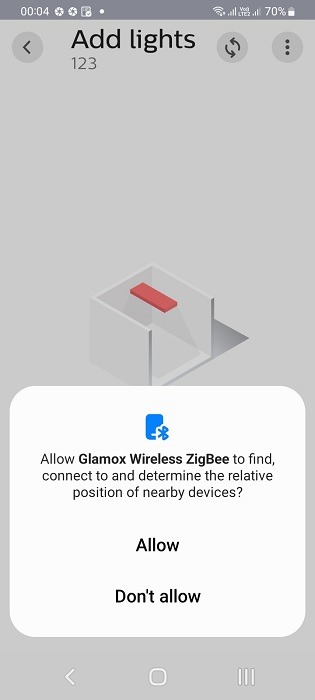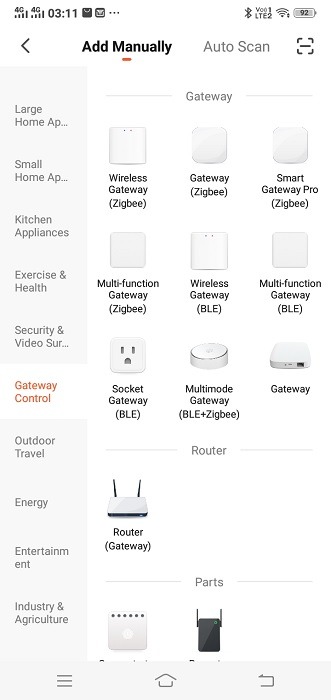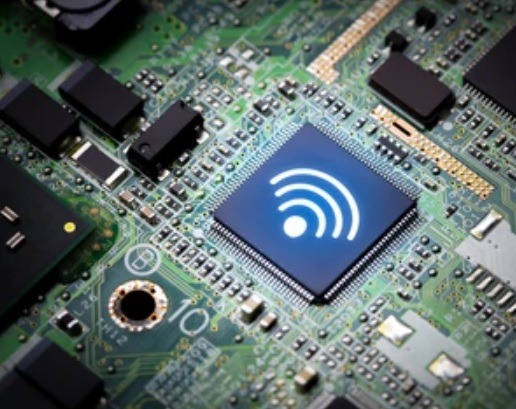
All smart home devices require a wireless technology to connect to each other. Wi-Fi is a ubiquitous choice here as it can easily pair with Amazon Alexa and Google Home-compatible devices. In recent years though, many low-power IoT devices have been switching to Zigbee. So, which one is better for your smart home needs? Find out in the comparison guide below.
Zigbee vs. Wi-Fi: Basic Differences
Both Wi-Fi and Zigbee are open standard communication protocols governed by the Wi-Fi Alliance and the Connectivity Standards Alliance respectively. They are fully ratified and widely supported across many smart consumer products.
What is Zigbee?
Founded in 2003, Zigbee protocol is an open-standard communication based on IEEE 802.15.4 which also governs other low-rate networks such as 6LoWPAN and Thread. The “bee” in Zigbee name was inspired from the zig-zag dance of honeybees while they pass messages in close proximity to other nodes.
Zigbee was conceived as a low-power, low bitrate, short-range protocol in 2.4 GHz band for efficient communication across a “mesh” of devices. It’s also available in shorter frequencies such as 915 MHz (North America), 868 MHz (Europe), and 784 MHz (China).

Zigbee’s maximum speed is 250 kbps which is a pittance compared to Wi-Fi but that’s not the reason for its popularity. Its design is suited for longer battery life as Zigbee devices consume orders of magnitude less power compared to a Wi-Fi radio device operating on a similar 2.4 GHz spectrum.
What is Wi-Fi?
Founded in 1997, Wi-Fi is a wireless network protocol based on the IEEE 802.11 standards. Its bandwidth is much higher, ranging from 32 Mbps (802.11a/b/g) to 9 Gbps (802.11ax), also known as Wi-Fi 6E. The next upcoming Wi-Fi standard known as Wi-Fi 7 (802.11be) is expected to scale theoretical speeds up to 30 Gbps.
Originally used to connect computers and networking devices in a local or wide area network, Wi-Fi has quickly evolved to support the communication for smartphones and tablets, smart speakers, smart televisions, smart fans, and almost every other consumer home appliance.

Unlike Zigbee which uses a “Coordinator” (Hub) device to join the Zigbee nodes, Wi-Fi is managed using wireless routers, Mi-Fi devices, or portable hotspots. Also, unlike Zigbee, Wi-Fi is designed to consume more battery power and most commercial Wi-Fi compatible devices have a Wi-Fi chip for communication with the wireless access point.
Zigbee vs. Wi-Fi: Where Zigbee is Better
1. Backward and Forward Compatibility
Zigbee certified products are designed to be compatible with both legacy and future versions of Zigbee. The backward compatibility is allowed for the latest Zigbee 3.0.1 devices to merge into your current network. Also, older Zigbee devices can join Zigbee 3.0 networks based on the security policy allowed, and through over-the-air updates. With Zigbee if you already have smart home devices deployed in the network, you can be sure they will be compatible with the new Zigbee nodes.
Wi-Fi certainly does not have this advantage. While you can use Wi-Fi 6/6E with previous standards, the forward compatibility doesn’t work with devices designed for earlier versions of Wi-Fi.

2. Low Power – Less Charging
Wi-Fi has its limitations. The devices that run solely on Wi-Fi need to be constantly plugged in or require frequent charging. Think of laptops, smartphones, and even Alexa/Nest speakers. In comparison, Zigbee devices have been designed to run in low-power mode. This gives more standby time and more continuous operations.
The longer battery life comes at the expense of bit rate, and at a max speed of 250 bits/second, you can’t use Zigbee for anything else but home automation.
3. Fault Tolerance
Both Zigbee and Wi-Fi follow different network topologies. Zigbee is arranged around a mesh where each node not only talks to the “Coordinator” but also with other nodes, leading to better fault tolerance. If one of the nodes is disturbed/damaged, it does not affect the remaining network.
With Wi-Fi, your smart home is much more vulnerable to single point of failure. If the main Wi-Fi router stops working, all your smart devices will follow suit. The only way around this is to use Wi-Fi repeaters.
4.Extending the Reach
Instead of manually adding repeaters as in a Wi-Fi network, Zigbee allows each Zigbee node to act as a repeater. As long as your Zigbee device object (ZDO) is powered-on, it can relay and transmit signals to the end node. Therefore, the more Zigbee devices you buy, the further you’ll extend your reach (although you should be concerned about signal disruption with too many Zigbee nodes).

5. No Need to Enter Password Every Time
With Wi-Fi networks, it can be tiring to enter a password every time a new device is added. It can feel more tedious with any device disconnection or other service issues. Although many apps allow you to set up future devices in the same Wi-Fi network, all those devices must belong to the same company.

On the other hand, Zigbee protocol support a feature called “device discovery services.” The client node is automatically discovered and connected in the network which removes the need to enter passwords manually.
6. Types of Devices Supported
Zigbee is becoming a universal choice for HVAC Control, Light Management, Energy Management, Light monitoring, environmental monitoring, motion sensors, and commercial buildings. The following are a range of Zigbee-compatible devices. Some applications commonly used with Zigbee include wireless and multifunction gateways, smart switches, dimmers, LED bulbs (e.g., Philip Hue lights), and other multipurpose components.

Wi-Fi vs. Zigbee: Where Wi-Fi is Better
1. Cost
Zigbee smart devices can be notoriously more expensive than Wi-Fi devices designed for the same basic purpose. This is because Wi-Fi devices have been in the market for way long. Also, for a given application, more device manufacturers may support Wi-Fi devices rather than Zigbee. This can limit one’s choices.
2. Availability
Presently, Wi-Fi is available with many more smart devices compared to Zigbee. If you buy any smart product online, it’s mostly guaranteed to support Wi-Fi integration. While Zigbee is a popular IoT protocol, its adoption rate is nowhere near as high as Wi-Fi. For example, in the Amazon Alexa range of speakers, currently, only Echo 4th generation, Echo Show 10, and other high-end devices support Zigbee. You won’t be able to connect Zigbee to Echo Dot.

3. Range and Signal Quality
Most Zigbee devices operate better in short distances due to the shortwave physics. In comparison, long-range Wi-Fi can support distances up to 100 meters. This means they are less prone to signal interference compared to Zigbee devices. The Zigbee signals happen to be weaker anyway, which can increase the distortion and signal deterioration if there are way too many Zigbee devices in a short range. Modern Wi-Fi networks have overcome this barrier with quality-of-service improvements, making them less vulnerable to signal issues.
4. Device Integration
It’s easier to integrate Wi-Fi connectivity on an IoT device compared to Zigbee. A Wi-Fi chip is assembled on almost any IoT board which comes equipped with a Wi-Fi radio helping connect to any wireless access point. Device integration using Zigbee is much more difficult because one needs a Zigbee sensor which has to be separately purchased and integrated into the IoT board.

5. Security
Compared to Zigbee, Wi-Fi offers higher security. Since Zigbee is an open-standard technology, Zigbee devices of different vendors are more compatible with each other than Wi-Fi. For example, you cannot use Philip Wiz lighting app to run Amazon Alexa skills on Wi-Fi unless you link the two accounts. All Zigbee devices, on the other hand, speak the same universal language. So apps by different vendors are cross-compatible, which introduces greater security risks.
6. Consumer IoT Applications
Offering much higher bandwidth, Wi-Fi is definitely suited better for consumer IoT applications. You cannot use Zigbee to send even an email so it’s not suitable for any consumer IoT applications which may require continuous user interactions. They are really more suited for smart home automation alone.
Zigbee vs. Wi-Fi: Which is Better for Smart Homes?
In the above comparison of Zigbee with Wi-Fi, we have explored their respective pros and cons. Zigbee has some unique advantages such as suitability for low power networks, and faster integration with existing devices. However, according to Connectivity Standards Alliance which upholds Zigbee standards, the low power networking protocol is being merged with another network called “Matter.” This means it’s still an evolving technology, nearly not as established as Wi-Fi.
More smart devices and companies use Wi-Fi compared to Zigbee. Given that it also has a clear security advantage over Zigbee, as of 2023, Wi-Fi should remain a clear first choice for smart home needs.
Get the best of IoT Tech Trends delivered right to your inbox!











